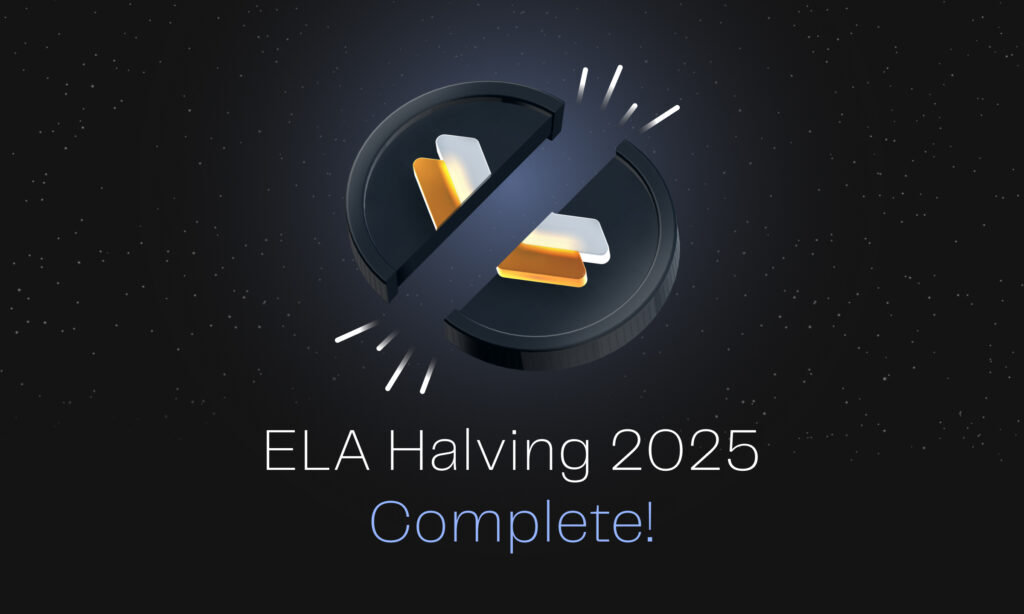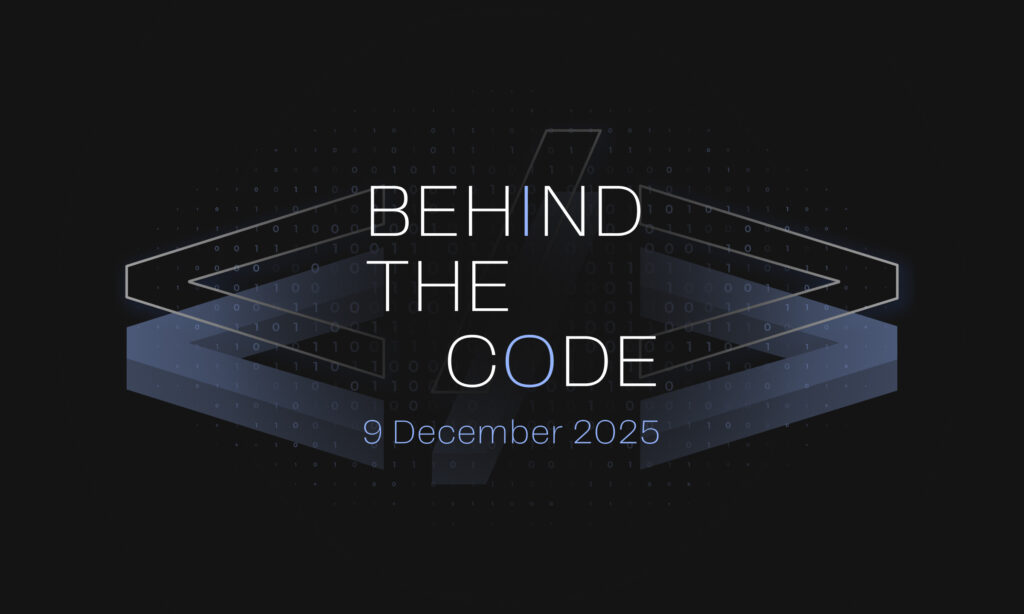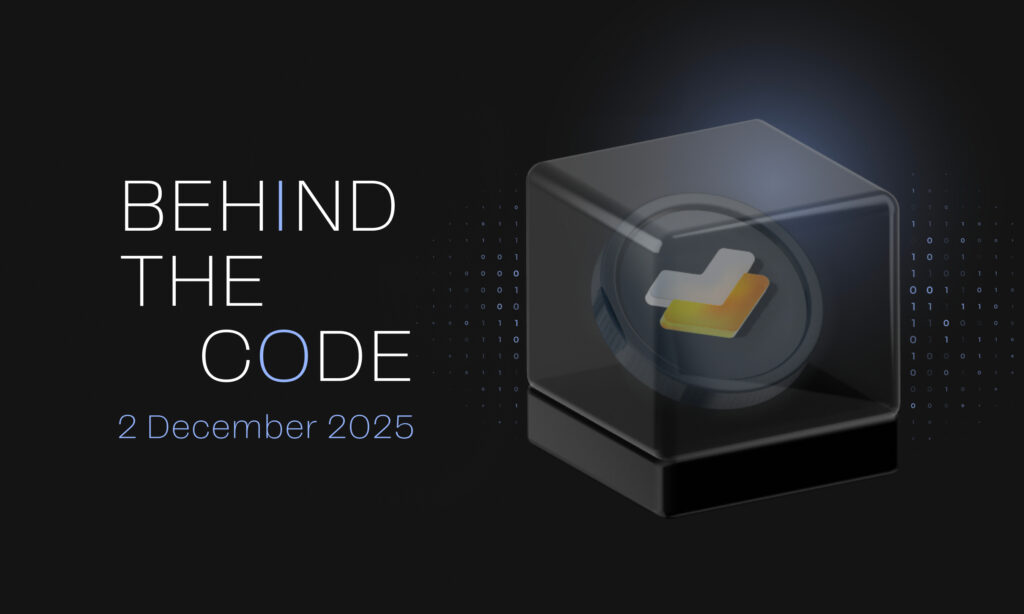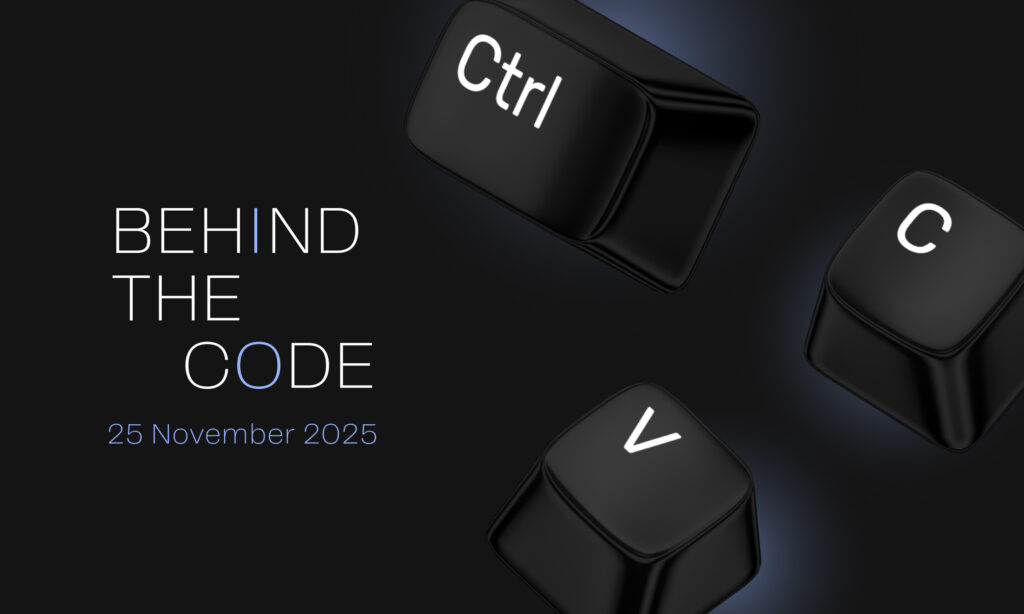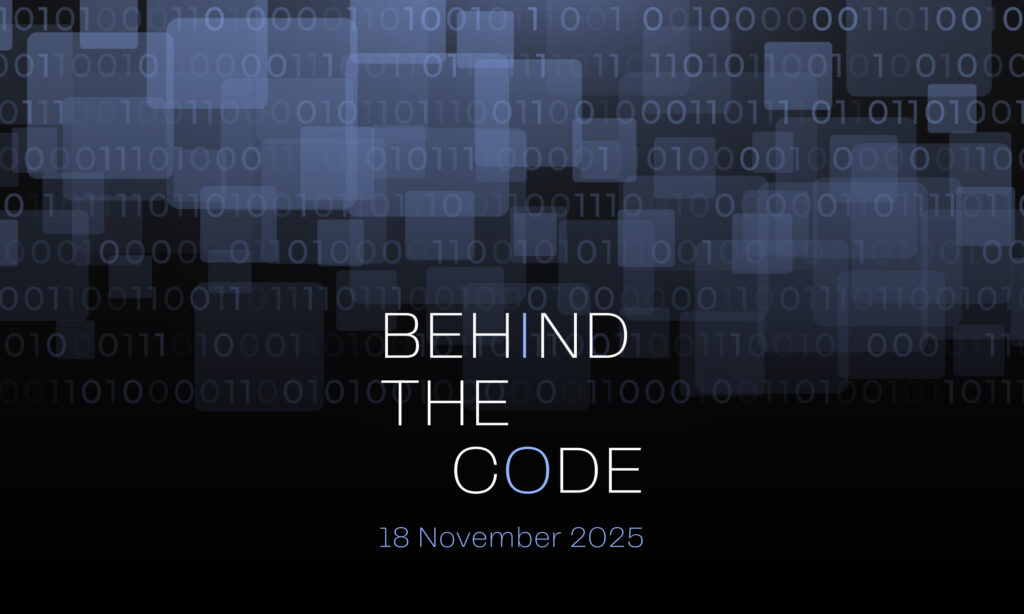ELA is the native cryptocurrency of the Elastos ecosystem, designed to power a secure, user-centric internet. What makes ELA unique is its advanced security approach, with the main chain secured by over 50% of Bitcoin’s hash power through merge-mining. The Elastos ecosystem features four distinct versions of ELA: ELA on Elastos Main Chain (the native Layer 1 coin secured by a three-layer consensus mechanism), ELA on Elastos Smart Chain (ESC) for smart contracts and dApps, ELA on Elastos Identity Chain (EID) for decentralized identity solutions, and ERC-20 ELA on Ethereum for cross-chain accessibility.
In this guide, we will explain each type of ELA in detail and walk through the various bridging processes that allow you to move your ELA between these different networks. Understanding these processes is essential for accessing the full range of features and opportunities across the Elastos ecosystem.
Table of Contents
- Different ELA Versions on Different Networks
- Why Bridging ELA Matters
- Exchanges Supporting Different ELA Chains
- Tools Required for Bridging
- Elastos Essentials Wallet
- Third-Party Bridges
- Bridging Tutorials
- Bridging ELA on Ethereum (ERC-20) to Elastos
Different ELA versions on Different Networks
ELA on Elastos Main Chain
ELA is the native layer 1 coin of the Elastos blockchain. The Elastos Main Chain secures ELA through a unique three-layer Elastic Consensus mechanism combining Auxiliary Proof of Work (AuxPoW), which merge-mines with Bitcoin to leverage Bitcoin’s security without additional energy consumption; Bonded Proof of Stake (BPoS), which requires ELA staking to participate in consensus and rewards long-term network commitment; and Proof of Integrity (PoI), an additional governance layer ensuring consensus integrity.
Unlike account-based blockchains, Elastos Main Chain uses a UTXO transaction model similar to Bitcoin, providing enhanced privacy and security for ELA tokens.
ELA on Elastos Smart Chain (ESC)
The Elastos Smart Chain (ESC) is an EVM-compatible side chain designed specifically for running smart contracts and decentralized applications. This interoperability makes it easy for developers familiar with Ethereum to build on Elastos while enjoying the security and speed benefits of the ecosystem.
ESC serves as the platform for various DeFi applications, NFT marketplaces, and other decentralized applications within the Elastos ecosystem. ELA tokens on ESC are representations of the main chain ELA, used specifically for transactions within the smart contract environment.
ELA on Elastos Identity Chain (EID)
The Elastos Identity Chain (EID) is a specialized side chain dedicated to decentralized identity solutions. It’s W3C DID-compliant, ensuring standardized identity management across the ecosystem.
Unlike the other chains, EID is not used for trading on exchanges. Its primary purpose is to facilitate identity-related transactions and verifications, forming a crucial part of Elastos’ vision for a user-owned internet.
ELA on Ethereum (ERC-20)
Elastos has also deployed ELA as an ERC-20 token on the Ethereum blockchain. This is not native to the Elastos blockchain but rather a bridge token created under the Elastos Foundation to enhance cross-chain accessibility.
It’s important to note that ERC-20 ELA has limited utility on its own and is best bridged back to the Elastos Main Chain or ESC to access the full range of Elastos ecosystem features. This cross-chain flexibility is a key component of Elastos’ interoperable design.
Why Bridging ELA Matters
Multi-Network Liquidity
Bridging ELA between different networks enables users to access diverse DeFi opportunities. Each network offers unique applications and services, from yield farming on ESC to secure transactions on the Main Chain. By bridging tokens, users can optimize their investment strategies across multiple chains.
Cross-Chain Opportunities
Various exchanges support different versions of ELA. By understanding how to bridge between networks, users can take advantage of trading opportunities on different platforms, potentially accessing better liquidity or prices depending on market conditions.
Exchanges Supporting Different ELA Chains
Elastos Main Chain Support
Several exchanges support deposits and withdrawals directly on the Elastos Main Chain. Kucoin, Gate.io, SimpleSwap, StealthEX, and Coinex are exchanges in which mainchain ELA is available.
Elastos Smart Chain Support
Some exchanges have begun supporting ELA on ESC for more efficient transactions. This number is growing as ESC gains popularity among developers and users. Kucoin, Gate.io, Chainge Finance, SimpleSwap, StealthX, and Glide Finance are exchanges in which you can acquire ESC ELA at.
No Direct Exchange Support for Identity Chain
It’s important to clarify that the Elastos Identity Chain (EID) is exclusively used for DID solutions and is not listed on exchanges. This specialized chain serves identity verification purposes rather than trading.
ERC-20 ELA Considerations
While ERC-20 ELA can be held on Ethereum-compatible wallets and exchanges, its utility is limited without bridging to ESC or the Main Chain. Users should consider bridging their ERC-20 ELA to access the full range of Elastos ecosystem features. Uniswap V3, Coinbase, HTX, BingX, Crypto.com, and Bitget are exchanges you can acquire ERC-20 ELA at.
Tools Required for Bridging
Elastos Essentials Wallet
The Elastos Essentials wallet is the primary tool for managing assets across the Elastos ecosystem. To get started:
- Download the Elastos Essentials wallet from Elastos website
- Create a new wallet or restore an existing one
- Securely back up your seed phrase
- Learn to switch between networks (Elastos Main Chain, ESC, Ethereum) within the wallet interface
The ability to switch networks within a single wallet interface makes the bridging process much more straightforward.
Third-Party Bridges
Several third-party bridges complement the native bridging capabilities:
Glide Finance Bridge: A popular option for bridging between ELA on Ethereum to ELA on Elastos Smart Chain (ESC) and vice versa.
Change Finance Bridge: Another reliable option for bridging between ELA on Ethereum to ELA on Elastos Smart Chain (ESC) and vice versa.
Bridging Tutorials
A. Bridging ELA Between Elastos Smart Chain and Elastos Main Chain
Prerequisites:
- ELA in your Elastos Essentials wallet on the Smart Chain
Step-by-Step Guide:
- Open Elastos Essentials and ensure “Elastos Smart Chain” is selected
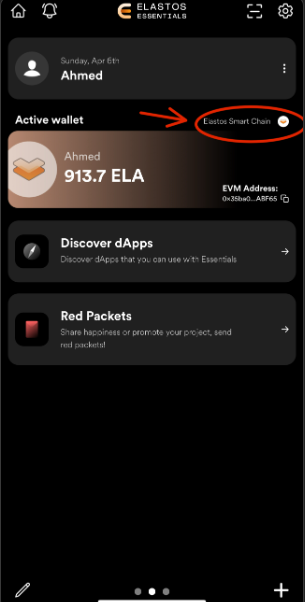
2. Open your identity and locate the ‘Transfer ‘option.
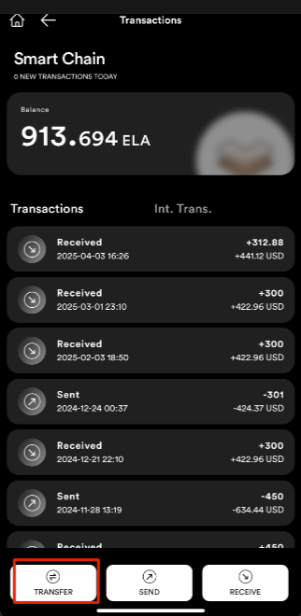
3. Enter the amount of ELA you wish to bridge to the Main Chain
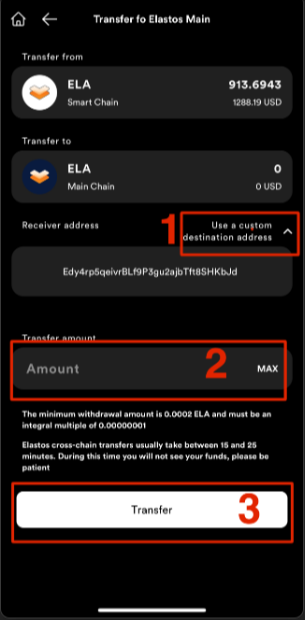
4. Confirm the transaction details
5. Switch network in Essentials to “Elastos Main Chain” to view your bridged tokens
Important Note: Bridging typically takes 10-15 minutes to move from native chains.
B. Bridging ELA Between Elastos Main Chain and Elastos Smart Chain
Prerequisites:
- ELA on the Main Chain in your Elastos Essentials wallet
Step-by-Step Guide:
- Open Elastos Essentials and ensure “Elastos Main Chain” is selected
- Open your identity and locate the ‘Transfer ‘option.
- Enter the amount of ELA you wish to bridge to the Smart Chain
- Confirm the transaction details
- Switch network in Essentials to “Elastos Smart Chain” to view your bridged tokens
C. Bridging ELA from Elastos Identity Chain and other chains
The process for bridging between Identity Chain follows similar steps as other native bridges. If you have specific questions, refer to the community Telegram group.
Bridging ELA on Ethereum (ERC-20) to Elastos
Tips & Reminders:
- Always select the correct network in your wallet before bridging
- Keep sufficient ETH for gas if bridging from Ethereum
- Be patient as cross-chain transactions may take time to confirm
To bridge ERC-20 ELA to the Elastos ecosystem, please follow the clear instructions provided for Glide Finance and Chainge Finance:
Glide Finance Bridge:
- Head over to Glidefinance.io/bridge and press “Connect Wallet”
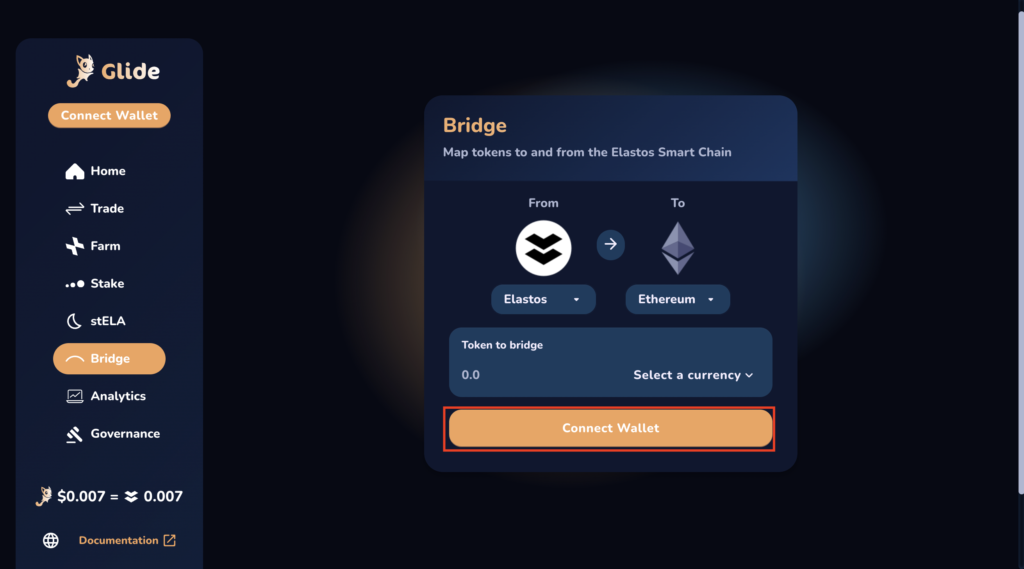
2. Connect your preferred wallet:
- Metamask will require your browser extension Metamask wallet
- WalletConnect will require you to scan the QR code from your mobile wallet
- Essentials (Injected) on your Essentials app requires enabling ‘Built-in browser’ and opening ‘Glidefinance Bridge’
- Essentials (Remote) will require you to scan the QR code on your Essentials app
For this tutorial, we will use Metamask
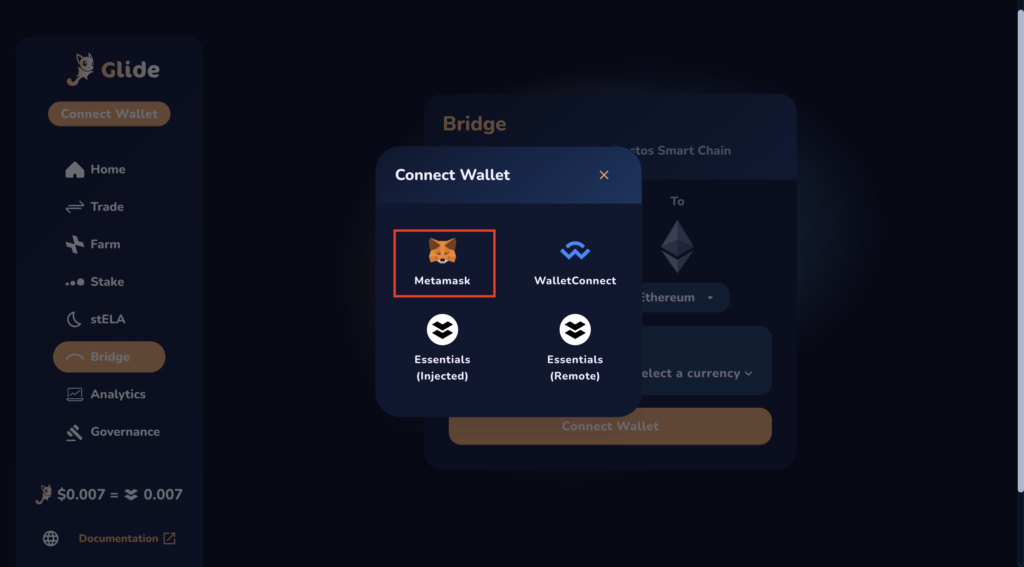
3. Connect your wallet by clicking the “Connect” button
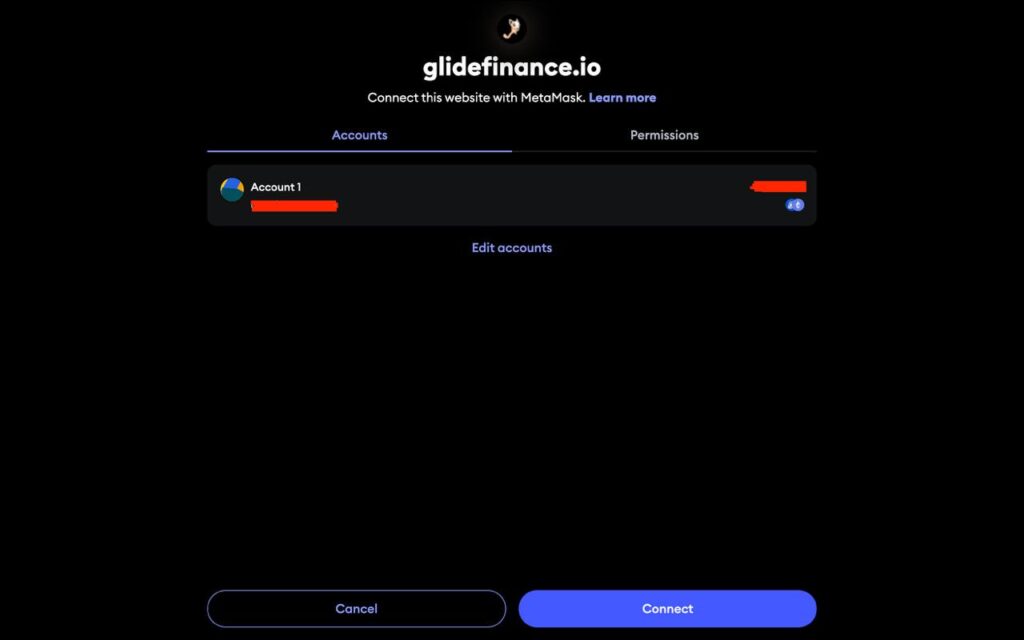
4. Press ‘Click Here to Switch’ to add Elastos Smart Chain network support to your Metamask Note: You can also add ESC network manually via https://elastos.net/wallet
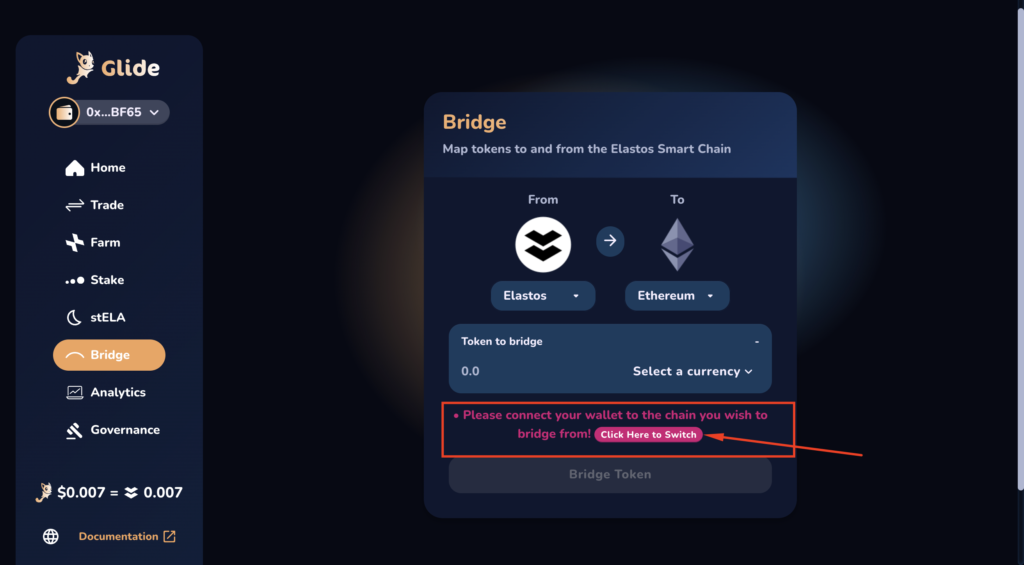
5. Press “Approve” to add ESC network support to your Metamask
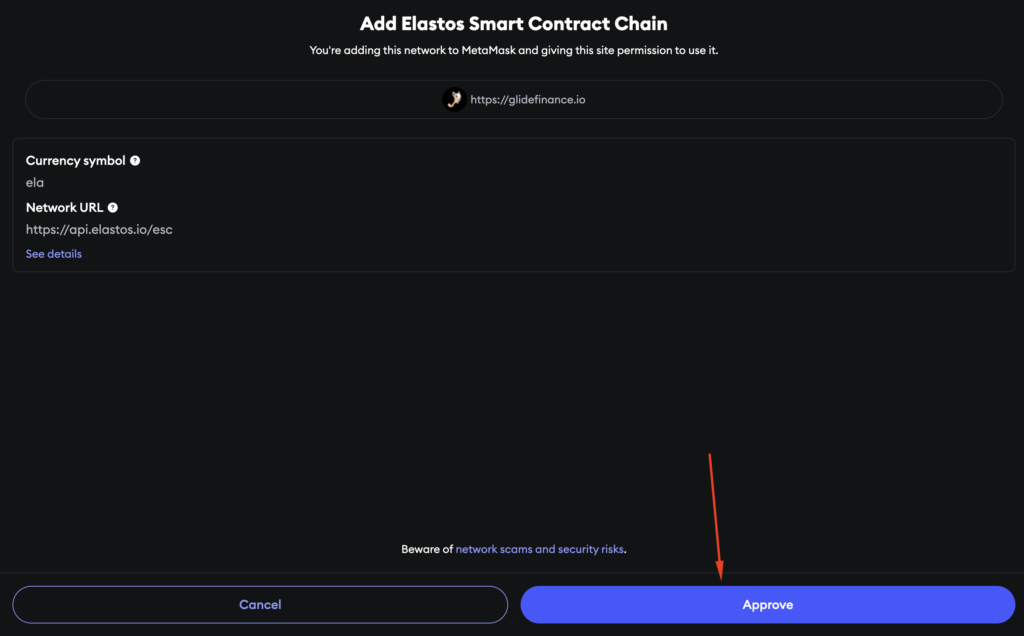
6. You can change which network you want to bridge from or to via the network selection buttons
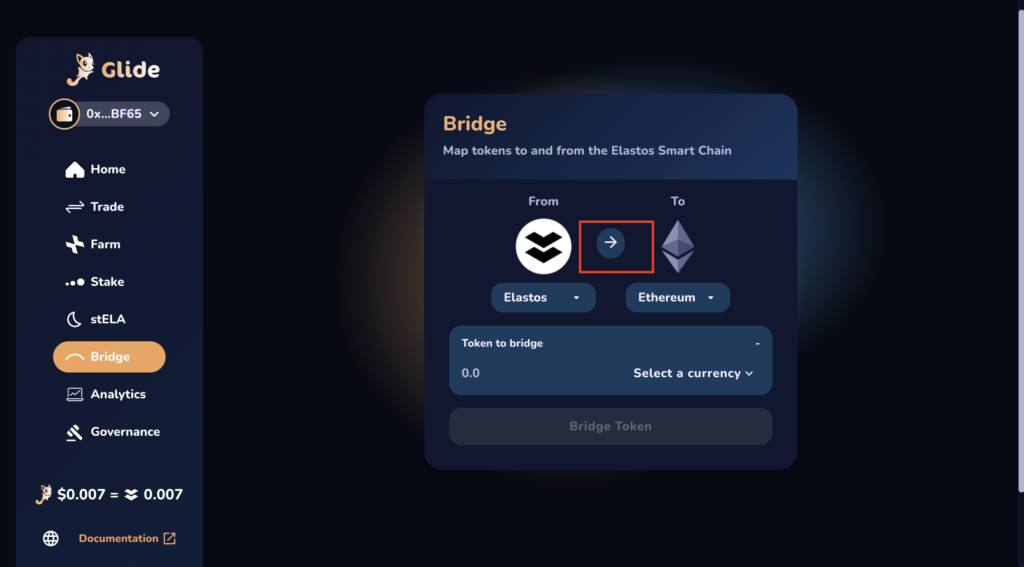
7. For this tutorial, we are bridging from ETH ELA to ESC ELA Important: Make sure you have imported ELA on Ethereum to your Metamask first. If not, follow these steps:
- Go to Metamask
- Click “Import Tokens”
- Add the ELA token contract address for the Ethereum network
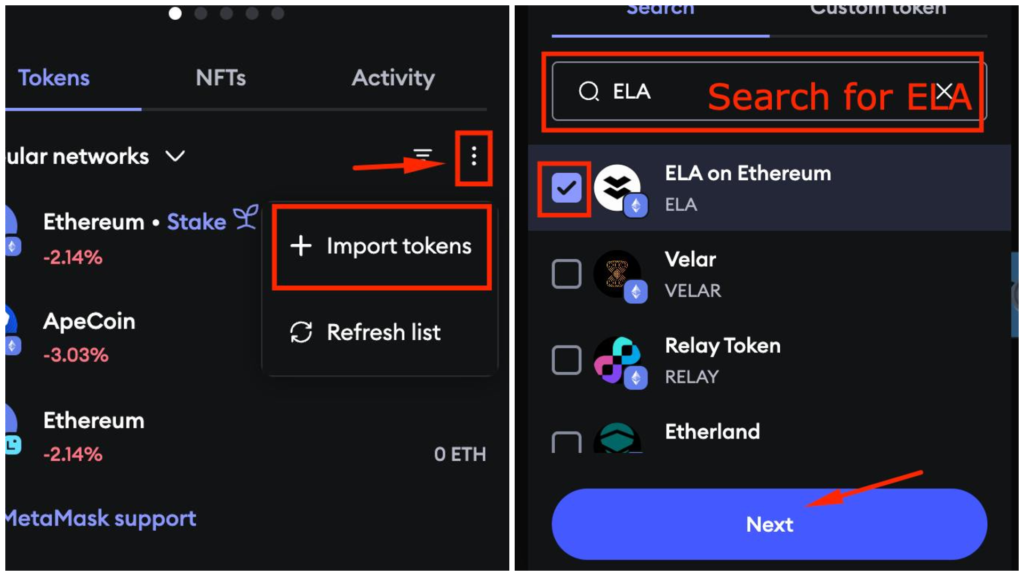
8. After pressing “Enable”, you will need to accept permissions. Press “Confirm”
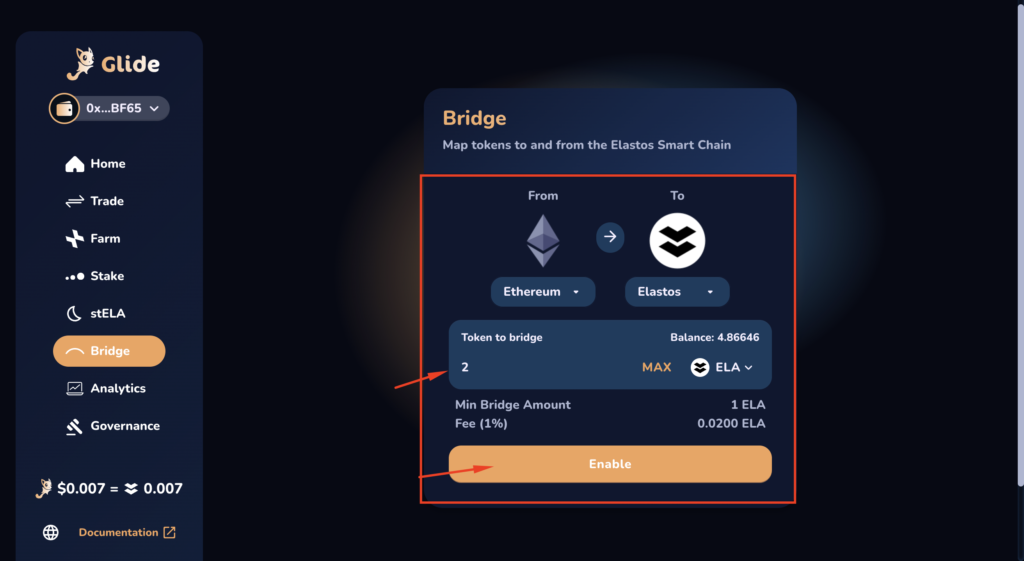
9. Once you’ve confirmed the signature on Metamask, a pop-up will appear to notify you of the successful signature. Now you can proceed with bridging:
- Enter the amount to bridge
- Press “Bridge”
- You will be prompted to confirm the transaction
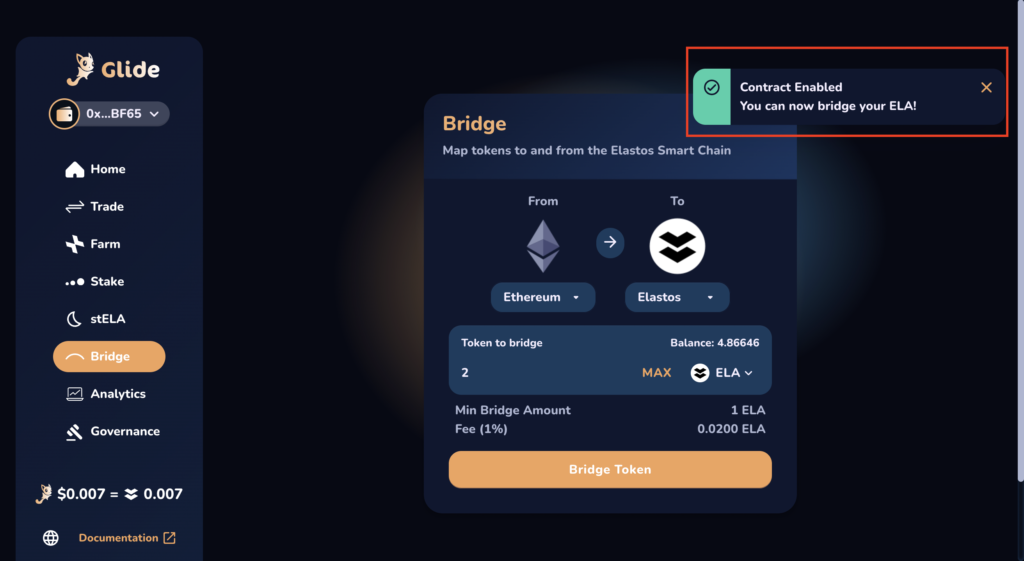
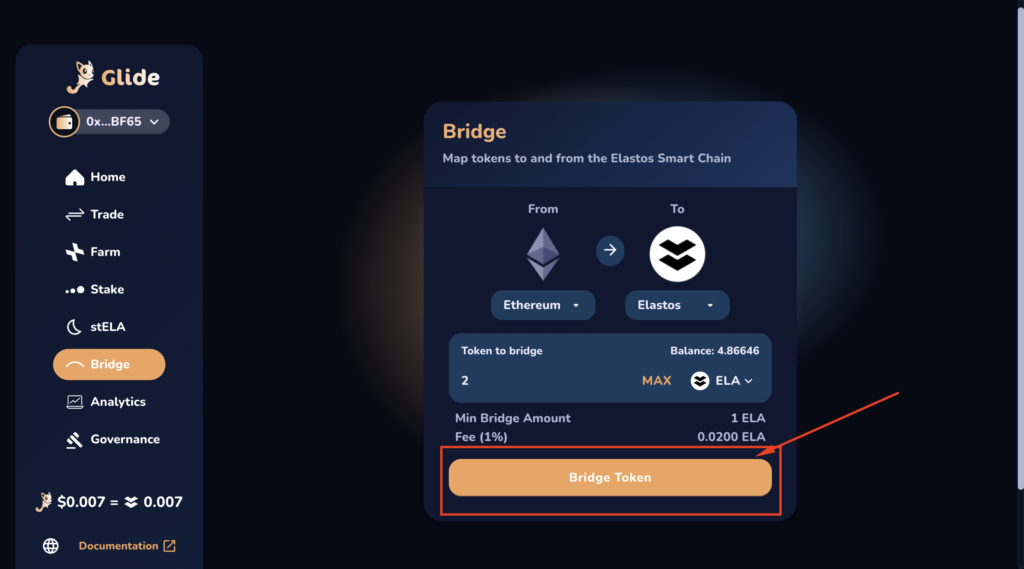
10. Important note: Make sure you have enough ETH for gas fees to cover the transaction
11. The bridging is complete. You will have to wait for a few minutes until your ELA tokens arrive in your ESC wallet
Chainge Finance Bridge:
- Open https://dapp.chainge.finance/ and navigate to the “Trade” section
2. Make sure you are selecting to bridge ELA on ETH (Ethereum network) to ELA on the Elastos Network
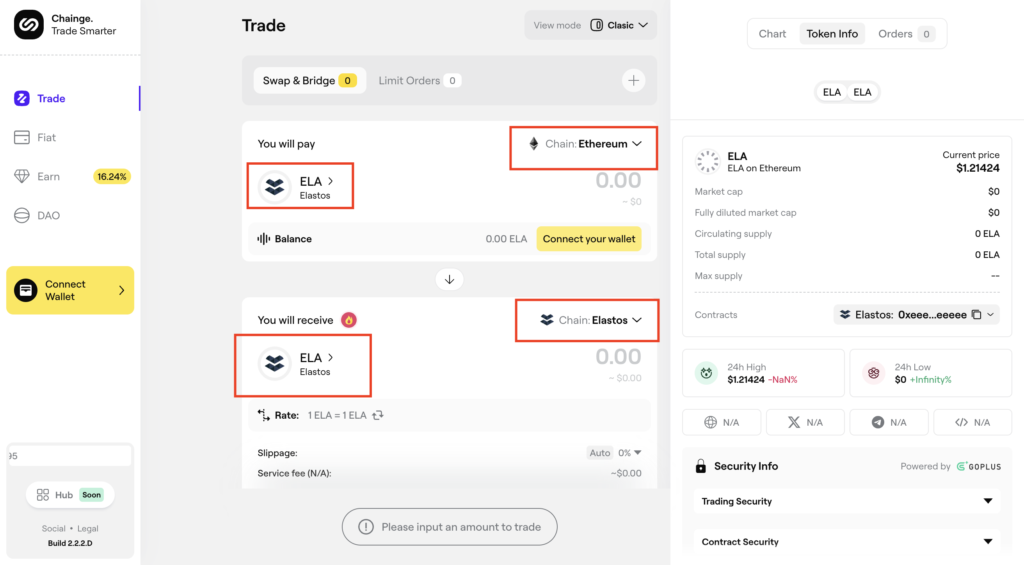
3. Connect your wallet and confirm any required signatures Note: Ensure you have a minimum of 5 ELA to trade
4. Press “Bridge Now” and wait 10-15 minutes for your transaction to complete
5. Your ELA assets should arrive on the Elastos Smart Chain after processing
Common Mistakes & Troubleshooting
Wrong Network Selected
One of the most common mistakes is attempting to bridge while on the wrong network. Always double-check that the correct network is selected in Elastos Essentials before initiating a bridge transaction.
Insufficient Gas/Fees
Transactions without sufficient fees will either fail to process or get stuck. Ensure you have enough native tokens (ELA, ETH, etc.) to cover transaction fees on both the source and destination networks.
Bridge Delays
Bridge transactions require confirmations on both blockchains and can sometimes take from minutes to hours. Be patient and check transaction status through blockchain explorers if available.
Get Involved
The unique multi-chain structure of Elastos provides robust security, smart contract functionality, and decentralized identity solutions. Understanding how to bridge ELA between these networks is essential to fully leverage the ecosystem’s capabilities.
We encourage you to try bridging your ERC-20 ELA to ESC to unlock greater utility within the Elastos ecosystem. If you need assistance, reach out to the active Elastos community through Telegram and Discord channels.
By mastering the bridging process, you’ll gain access to the full range of features that make Elastos a revolutionary platform for the next generation of the internet.
Understanding ELA across networks is essential for maximizing your opportunities in the Elastos ecosystem. Whether you’re using the secure Main Chain ELA backed by Bitcoin’s hash power, the smart contract-enabled ESC ELA, the identity-focused EID ELA, or the cross-chain ERC-20 ELA, proper bridging allows you to access the full range of features that make Elastos a revolutionary platform for the next generation of the internet. Visit elastos.net for the latest updates and join our community on Telegram or Discord for personalized assistance.



